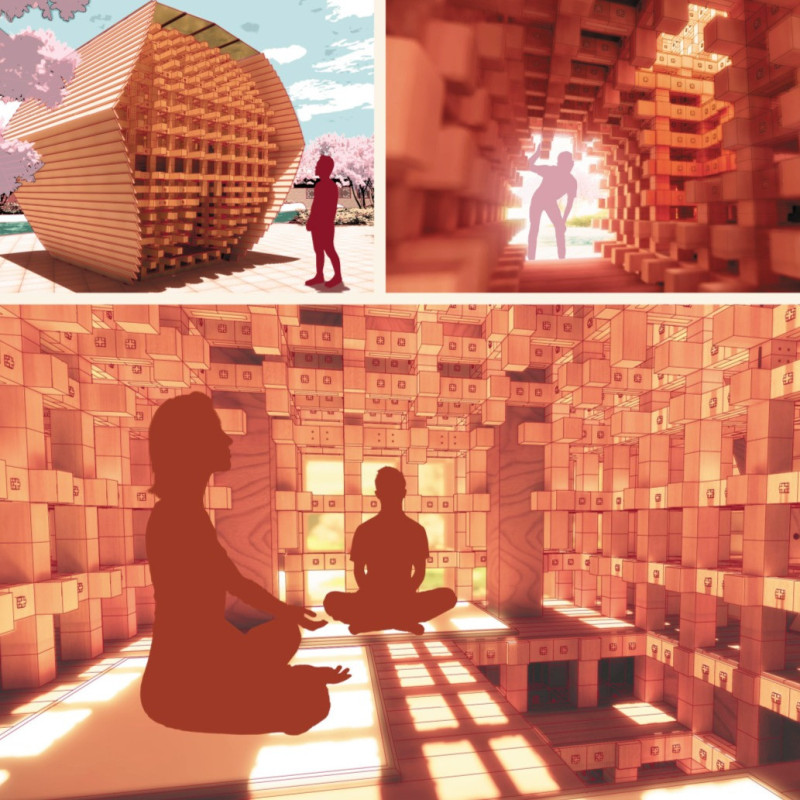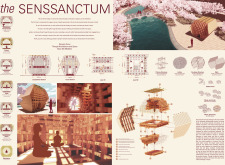5 key facts about this project
The SENSSANCTUM stands as a unique space designed to foster mindfulness and meditation. Located in a calm setting, the focus is on engaging the senses while providing a retreat for individuals seeking to connect with themselves and nature. The design concept emphasizes spatial awareness through intentional compression and elevation, allowing users to experience their environment on multiple levels.
Spatial Dynamics
At the first level, the design compresses space to heighten awareness. This environment invites visitors to engage their senses, particularly with the pleasant aroma of wood. Reaching the second level requires ascending, which encourages physical interaction with the building's textures. The feeling of the wood grain beneath the hands prompts a deeper sense of connection as users move through the space.
Light and Air
A key feature of the SENSSANCTUM is its lattice structure, which filters natural light into the interior. This creates a warm, inviting ambiance that shifts throughout the day. The design also incorporates open areas, allowing fresh air to circulate and ensuring the space remains comfortable. This thoughtful arrangement prevents humidity, contributing to a pleasant experience for occupants.
Acoustic Considerations
The acoustics are specifically designed to enhance the tranquil setting. Sounds from the surrounding environment are absorbed and transformed as they bounce off the wooden surfaces. This creates a calming background noise that supports the meditative atmosphere. Elements such as the inviting aroma of wood, tactile impressions from the surfaces, and soothing sounds blend together, fostering a focus on mindfulness.
Materiality and Craftsmanship
Materials used in the SENSSANCTUM reflect traditional Japanese architectural practices. Keyaki wood, Sugi wood, and Hinoki wood are incorporated, each chosen for their unique qualities. The flooring consists of Japanese Cherry wood, adding to the overall tactile experience. Additional features, like the soundproof gold-tinted glass, help control light and noise, creating a more immersive environment. The construction employs traditional joinery methods that minimize the use of metal fasteners and glue, showcasing an appreciation for craftsmanship and respect for cultural heritage.
In this space, sensory experiences are at the forefront. Every detail, from the structure to the materials, is designed to enhance the user's connection to nature and promote moments of reflection. The intricate joinery reveals the beauty of each element, creating a harmonious environment that encourages meditation and mindfulness.



















































